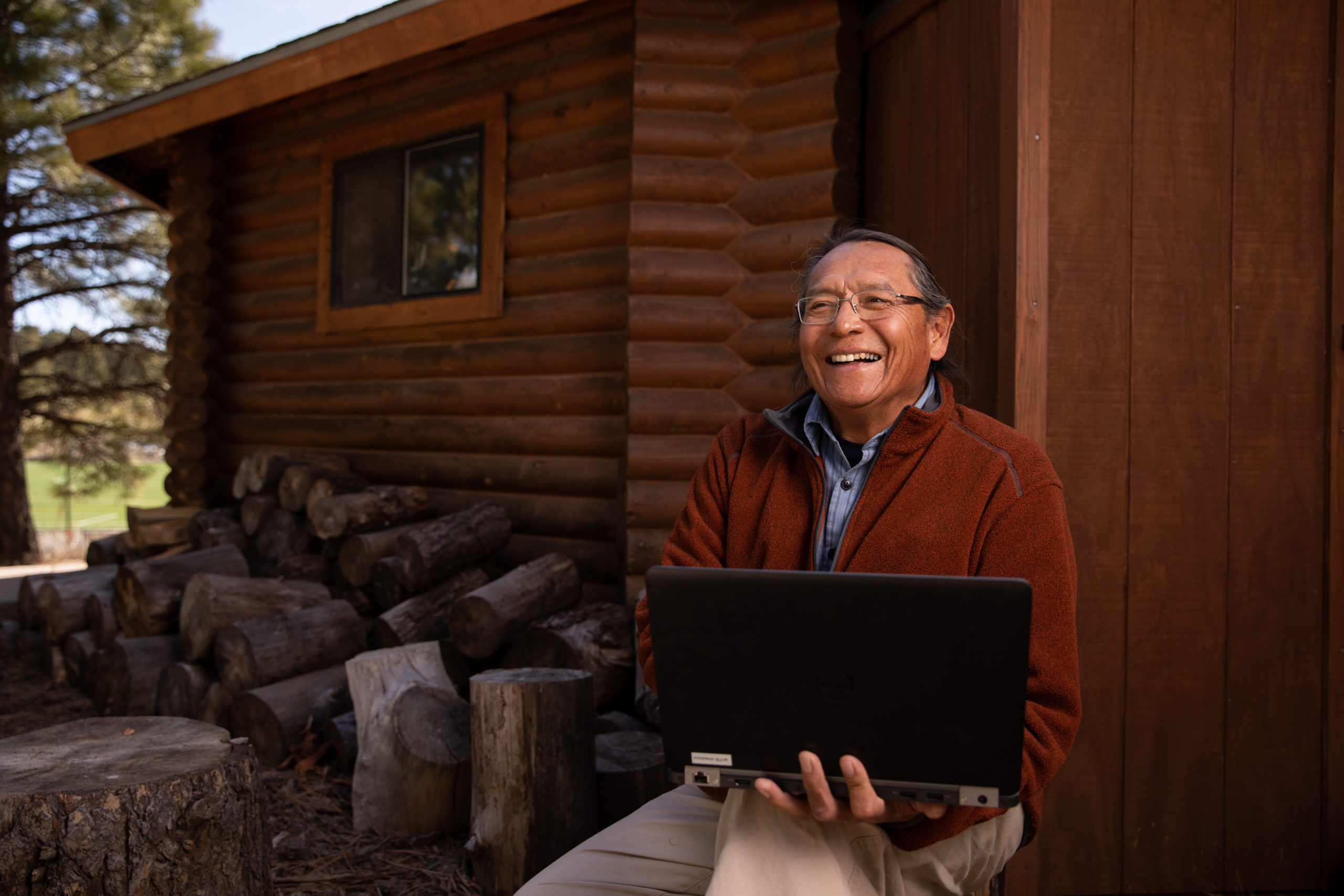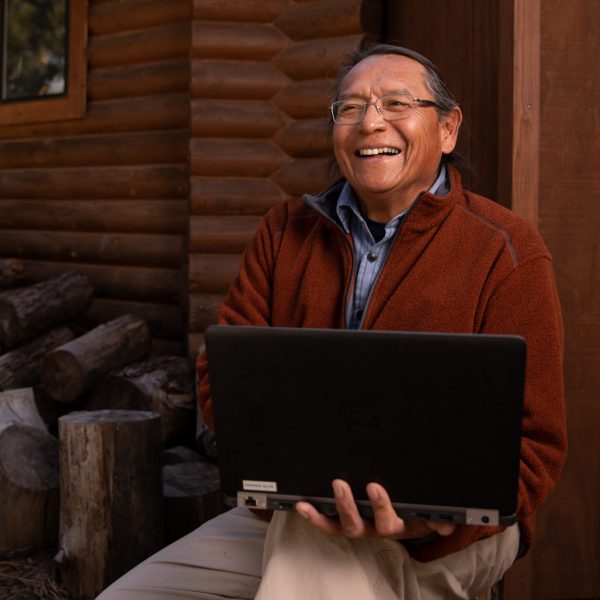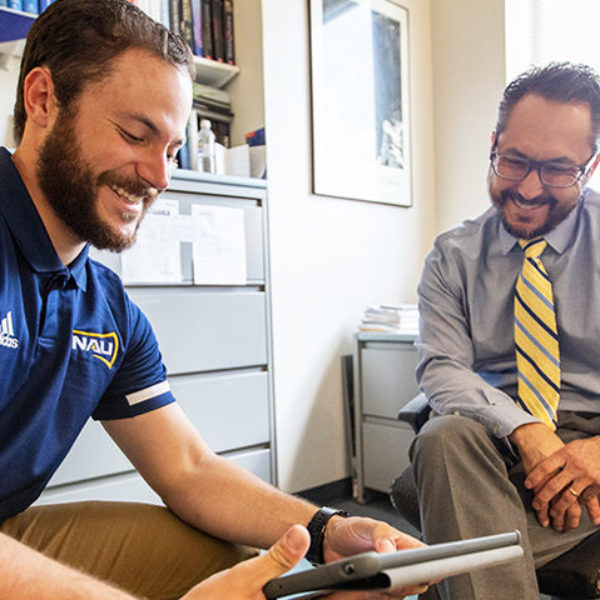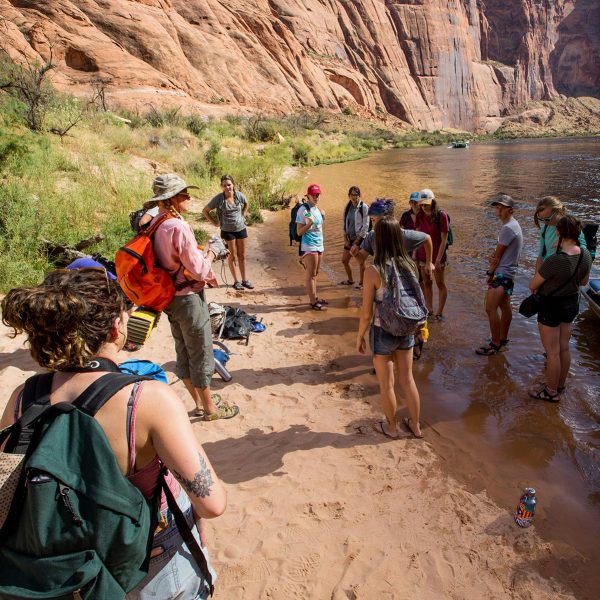The Native American Forest and Rangeland Management Program (NAFRMP) is part of the university’s Ecological Restoration Institute (ERI). Jonathan Martin, BS Forestry, ’85 and MS Forestry, ’91, sees the NAFRMP as a continuation of NAU’s commitment to Native Americans—goal number three in the 2025 Strategic Plan and what he experienced as a two-time NAU alumnus.
Martin is uniquely qualified for the position he started in May 2019, given his long career in the profession and his familiarity with the region as a member of the Navajo Nation who grew up in Gallup, New Mexico. The conversation here ranges from his vision for NAFRMP and the benefits of the program to how his time as an NAU student prepared him for a career as a forestry practitioner and an eventual return to his alma mater.
Think back to your years as a student. When you graduated, did you know what you wanted to do professionally?
Quite honestly, when I first got here I wasn’t even sure what a forester was. Everyone has some ideas of foresters being out in the woods. And as a teenager I didn’t do much work in the forest, but I knew I wanted to work in the forest. I had a choice of schools, but NAU suited me much better in terms of its curriculum. At the time it promoted the idea of multi-resource use management, and the other colleges had more of an emphasis on logging or engineering. And I just felt that this idea of multiple resource management just sounded like a more encompassing way of learning how to be a forester.
Do you think the School of Forestry has that same holistic approach today as it did then?
I think they do. The curriculum is pretty much the same, where you get exposure to a lot of disciplines. It teaches you how to look at all issues and bring that to the table to come up with a plan for being a forest manager—not being a hydrologist or a logger or a firefighter or another subset of forestry. But I think with NAU’s curriculum you get exposure to all those, and then you have a much broader understanding so you’re able to look at things as a whole rather than a specific issue within a management process.
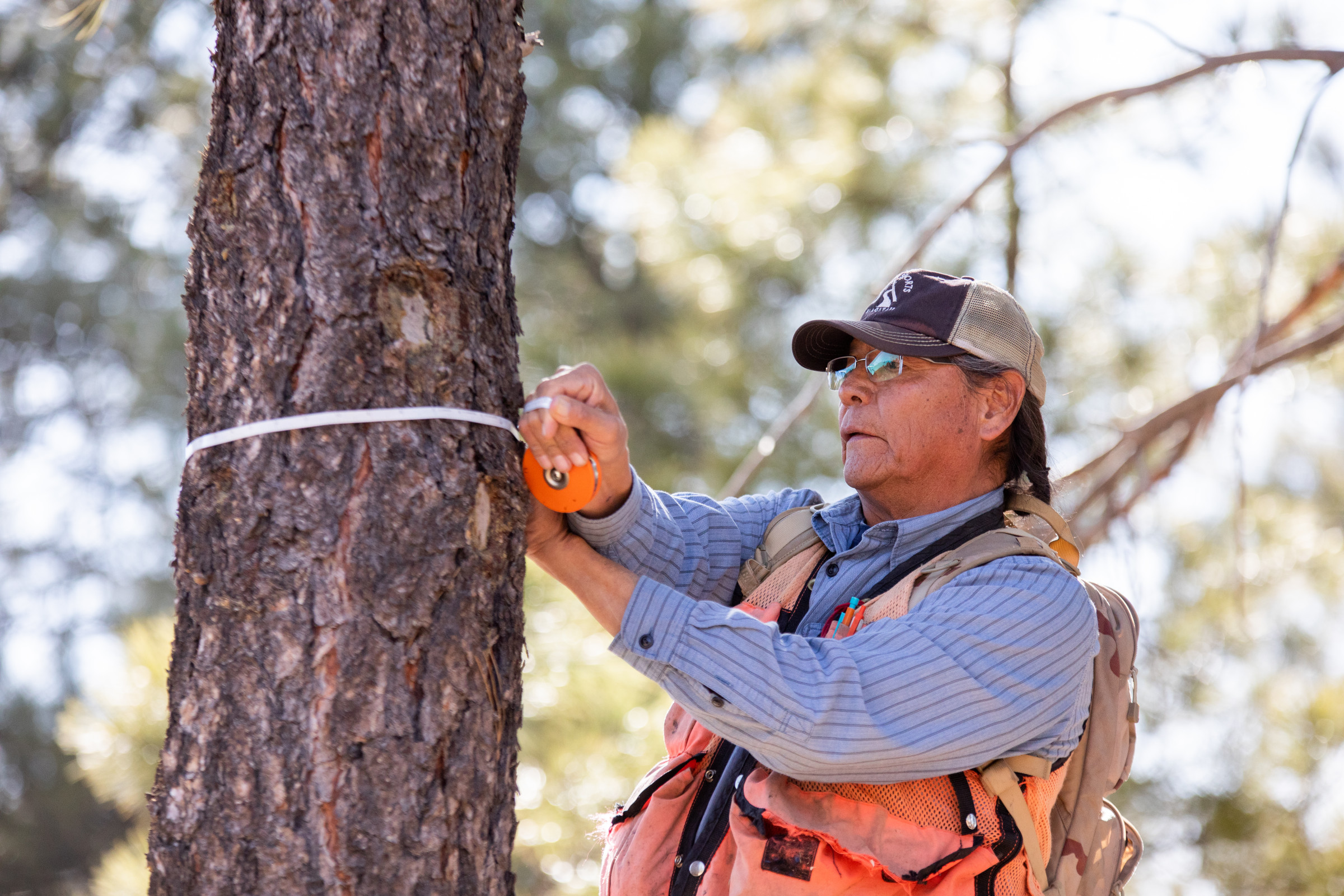
How did NAU help you reach your goals?
It’s definitely the case, especially with my master’s program, that I benefited from NAU’s commitment to Native American students. I came back to NAU in 1990, and at that time there was a Native American forestry program within the School of Forestry. They provided me some financial support for my graduate studies for two and a half years. That definitely made it possible financially for me to be able to come back and earn a graduate degree in forestry. I was one of the very first graduate students that was able to take part in that program.
What that did for me, professionally? It just entirely boosted my career and standing within professional circles. And it opened up other opportunities. That was definitely with some solid support from NAU, the School of Forestry, and the Native American forestry program.
My position right now is within the Ecological Restoration Institute, which is a sub-unit within the School of Forestry. My boss, Wally Covington, who was executive director of the ERI [before retiring in January 2020], had a plan to resurrect the Native American forestry program—but within the ERI, not as a program within the School of Forestry. There is a very close relationship between ERI and the School of Forestry.
That is the program that you now direct. How does the Native American Forest and Rangeland Management Program fit in to NAU’s priorities?
It’s an initiative at the university level. NAU has just revised its strategic plan, and it has five specific goals. Goal number three is a commitment to Native Americans, and specifically NAU has a goal of becoming the nation’s leading university serving Native Americans. So resurrecting this program within ERI is a reflection of NAU’s commitment.
It seems like you’re the ideal person to lead that program, given your history with the university and your practical experience.
I worked for the Navajo Nation Tribal Forestry Department and then the Bureau of Indian Affairs and Forestry for almost 30 years. So I have lot of experience with issues and programs and processes that are used for managing tribal forests. And I have also a lot of personal connections and work relationships that are helpful for reaching out and developing projects and working cooperatively with tribal programs. That’s been very helpful. I know the federal regulations, tribal regulations, and the interaction between tribes and federal agencies. So being able to work your way through that and work with it is very helpful in my position.
How do you feel that this program will benefit Native American students at NAU?
At the moment, students are not involved in the program. But there are plans to recruit and place Native American students either at the undergraduate or graduate level and get them involved with research projects and supporting their educational goals, providing guidance and connecting them with agency personnel for real work experience and gaining knowledge of working within a land management program or agency.
NAU’s commitment to students is making sure that those students are well educated and have the skills to go back to serve their tribal communities. The more students you have, the more capable you are of meeting tribal resource management needs. Recruiting, placing, and educating tribal natural resource managers and professionals demonstrates NAU’s commitment to serving tribal communities.
Are there many Native American college graduates that go into forestry and land management?
There are a considerable number of NAU graduates who are working in land management agencies. There is, I think, a considerable history of Native Americans going into forestry. It’s almost like tradition being passed from family to family. You see it quite a bit. But once a student decides to come and get a degree, then that puts them in a position to assume leadership roles within either their tribal program or a federal land management program.
There is definitely a need for more students. It’s been recognized by the Bureau of Indian Affairs and other land management agencies that the workforce is aging. Studies are saying that close to 60 percent or 70 percent of the current workforce are 55 years and older, so you’ll see a big turnover when these people start retiring. There is a very conscientious effort right now within the Bureau of Indian Affairs and other federal land management agencies to recruit and place Native American natural resource management professionals, not just in forestry, but other fields as well—environmental sciences, environmental engineering, hydrology, fish and wildlife. There’s a full range.

Why is it important to include Native American voices and Native American professionals in the next wave of workforce preparation?
Tribal communities and tribal members have unique needs in terms of managing their forests in culturally significant ways. And I think as a tribal member you’re more aware of those cultural differences in the land management approach.
And then management needs on tribal lands, specific management practices and goals and accomplishments, are a lot different than other public lands, like Forest Service and Park Service lands. The needs are different, and they vary from tribe to tribe. And then there’s also a cultural history, especially with tribes in the Southwest. Their reservations are on their traditional lands. So that’s significant in that there’s a cultural history of individual tribes being associated with the landscape on their reservation.
Can you give an example of the issues on tribal lands that are different from other public lands?
Yeah. It could apply to some specific resource disciplines, especially if you’re looking at archaeology, or water, which is a critical issue. In terms of forestry, tribes have a long history of managing their forests. And a good example of that is Indigenous use of fire as a management tool to help with the cultivation of significant plants or specific needs. And there are well-documented cases of tribal foresters using fire as a management tool.
There are subtle differences between, say, tribal management and management of US forest lands. I have to continually link it to culture. I think there’s definitely a more culturally sensitive tone of management. It’s not industrial. It’s not money-driven. It’s more about nurturing the land for the benefit of future generations.
I think tribal land managers realize that these lands are their lands, and that it wouldn’t make any sense to destroy that, because then what are you going to have once it’s gone? There’s more of an impetus on tribal lands because there is a sense of ownership and responsibility for ensuring that those resources are managed in a sustainable manner.
It’s a very opportune time because there are a lot of new legislative authorities that favor tribes’ participation across jurisdictions, all landscapes, and all lands’ forest management. A big theme currently within forest management is that we need to start looking at all lands together on a landscape scale.
So that land managers aren’t just focused on what they’re responsible for, but recognize how their decisions may affect adjacent lands?
Right. Wildland fire does not recognize jurisdictional boundaries. And neither do forest conditions. So if you’re looking at it on a much larger scale, healthier forests are the benefit. There’s a lot of new opportunities for tribes to pursue those cross-boundary activities. That’s one area ERI is really focusing on, working with all land management agencies and trying to get a broader perspective of land management treatments on lots of natural factors. Like bug infestations. Or you start looking at whole watersheds rather than just specific portions. A primary component in forest management is a timber stand. So instead of just looking at one stand you’re looking at whole watersheds, managing it from that perspective rather than just a very narrow project level.
You said that NAU opened up opportunities for you with that master’s degree. Do you see how you might provide opportunities for students, researchers, and current professionals down the line with your own position?
Right now I see it primarily in recruiting and mentoring students, either at the undergrad or graduate or postgraduate level, and making sure there are programs that are set up, either research projects or internships or other types of activities that would allow them to get excited about being a forester and going into a specific area of interest. I want to make sure those opportunities are available.
Mentoring has a large part to do with that—making sure students know that there are support services, not just within the School of Forestry but throughout the university. I’m really impressed with that, coming back and just seeing that NAU does a lot to try to support the students, through healthcare programs, counseling programs, and activities. November is Native American Heritage Month, and there’s a whole list of activities and social events where you get to meet other students and develop a support network.
Are there activities within NAFRMP that will help NAU students?
One thing specifically that my program is doing is we are currently in the initial stages of developing a tribal forestry student summit. We’ll be bringing tribal resource management students from across the country to NAU. We’re hoping to bring agency resource managers who can make presentations to this group of students outlining what opportunities are out there and trying to hook them up with potential employers. They’ll convene here for three days. We’ll do field trips, and I think it’s really a networking opportunity for them.
The summit is addressing this workforce issue. It’s tied in with federal agencies and their concerns that the workforce is aging and will be depleted if we don’t start developing replacement foresters, in particular on tribal lands. It’s grooming these students for success.
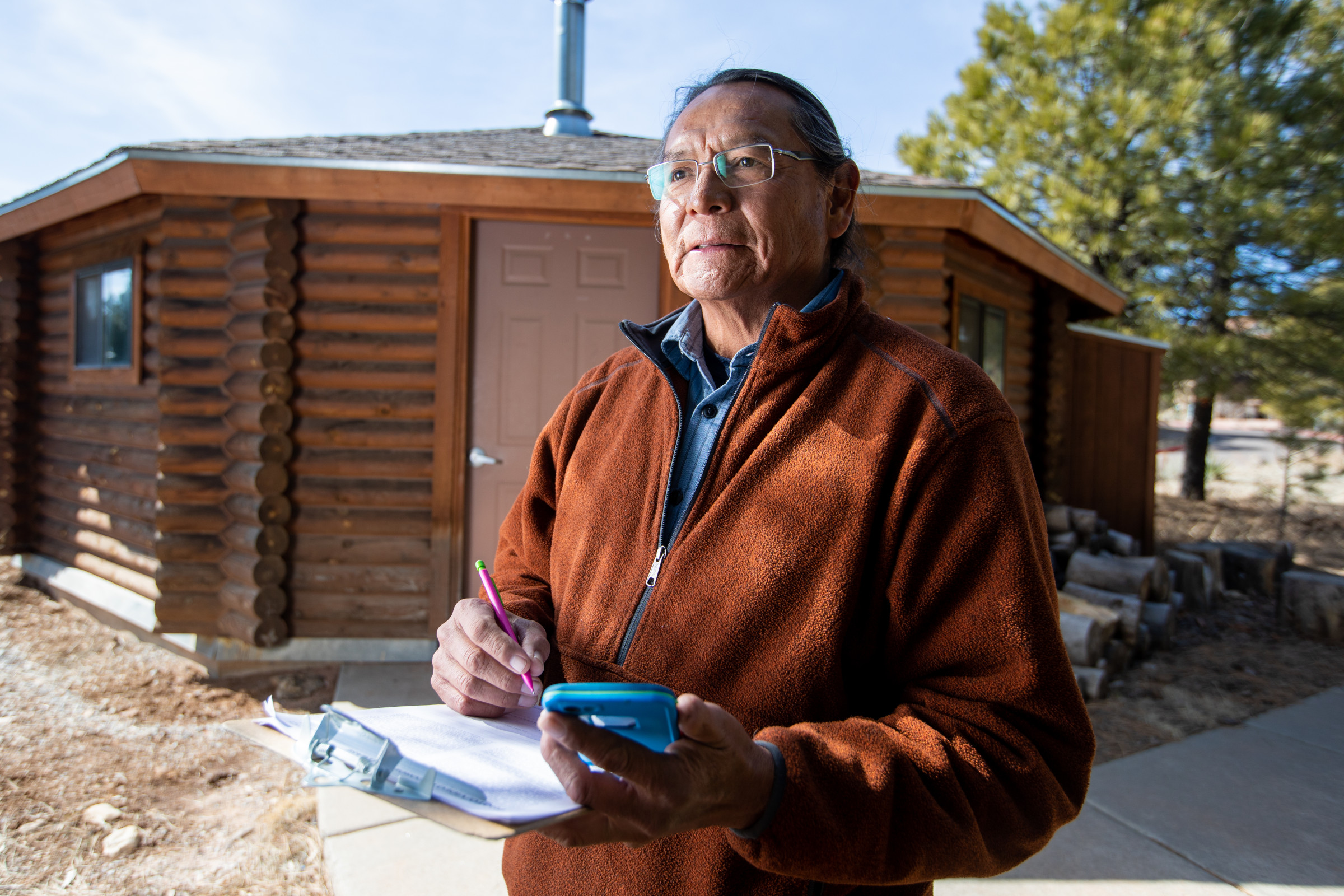
That sounds amazing, and definitely fits in with what we’ve been talking about.
Right. And it’s been a good exercise for me because I’ve been having to network with other programs on campus to make this possible, like the Office of Native American Initiatives, which is in the Native American Cultural Center. So it’s been helpful for me to get out and start working with other NAU programs and departments and letting them know what my program is about. And then if they’re aware of students who are interested in a forestry degree, I’m a resource for them to reach out to and seek advice.
When you’re educating others on campus about your program, you’re providing another example of how NAU is trying at a strategic level to live up to that role.
Yes. And then ERI just recently revised its strategic plan. And both plans have commitments to serve in tribal communities. So when you reach out to potential partners, you can point out to them what it says right here in writing—this is a goal. NAU has committed. ERI has committed. And service to tribal students and tribal communities is a commitment.
Does it inspire you to know that your job right now is at the heart of these issues and opportunities we’re talking about? That you’ll be engaging with students and existing professionals in the field to make sure that these kinds of issues are taken seriously and, you would hope, applied effectively?
I’m definitely excited. You know, I had retired from federal service, and this opportunity came up. So it’s a unique opportunity, and especially if you’re starting a new program from scratch. There’s a lot of challenges, a lot of issues I need to address.
I’m excited to think that what I’m doing now is laying the groundwork for a program that will be around for a while and will result in some good things happening on tribal lands. And we’ll start providing trained and educated tribal resource management professionals.

